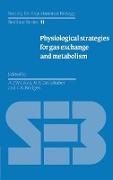Read more
Originally published in 1991, this book reviews the various metabolic and functional mechanisms that animals possess.
List of contents
List of contributors; Preface; Does comparative respiratory physiology have a role in evolutionary biology (and vice versa)? W. W. Burggren; Energy metabolism in helminths P. Kohler; The role of carbonic anhydrase within the tissues, with special reference to striated muscle G. Gros; Multiple strategies in oxygen and carbon dioxide transport by haemoglobin F. B. Jensen; Respiratory gas exchange and the regulation of acid-base status in decapodan crustaceans E. W. Taylor, N. M. Whiteley and M. G. Wheatly; Respiration and thermoregulation of amphibians and reptiles S. C. Wood and M. L. Glass; Ventilation, gas exchange and oxygen delivery in flying and flightless birds J. H. Brackenbury; Animal energetics at very low oxygen: information from calorimetry and respirometry E. Gnaiger; pH changes in fish during environmental anoxia and recovery: the advantages of the ethanol pathway G. Van Den Thillart and A. Van Waarde; Respiratory and metabolic adaptations of aquatic annelids to low environmental oxygen tensions A. Toulmond; Respiratory adaptations of aquatic decapod crustaceans and fish to a burrowing mode of life A. C. Taylor and R. J. A. Atkinson; Respiratory adaptations to limited oxygen supply during diving in birds and mammals P. J. Butler; Index.
Summary
This 1991 book reviews the various metabolic and functional mechanisms that animals possess in order to live successfully in their own particular, often unique, environments. It demonstrates both the diversity of responses that are shown and the underlying principles of gas exchange and transport for a wide range of organisms.

